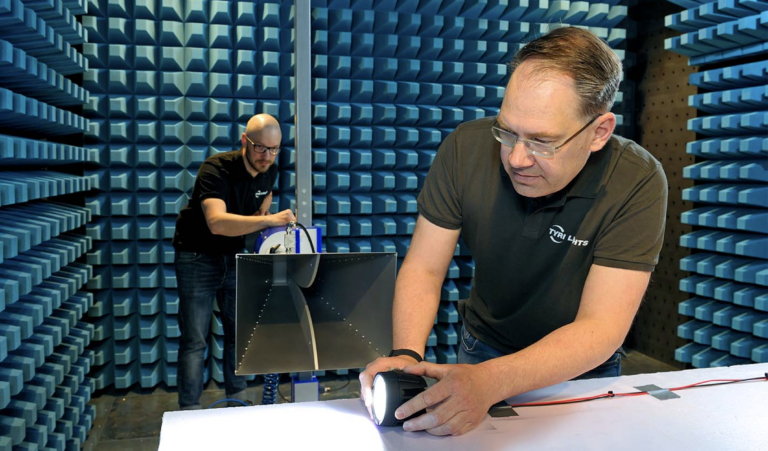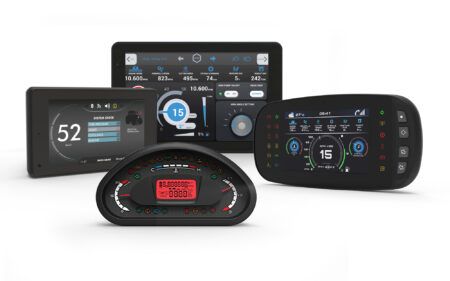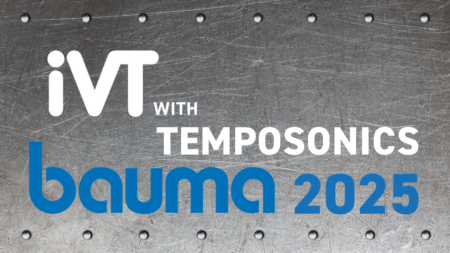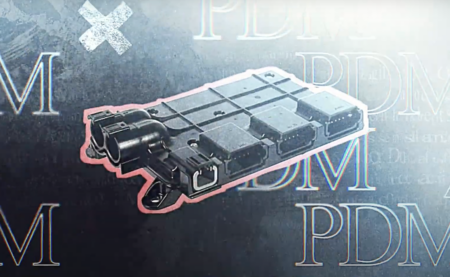To remain agile and at the forefront of design, lighting company TYRI has invested an additional €200K EUR ($240K USD) to enable more testing in its inhouse EMC laboratory in Gothenburg.
The investment means the leading lighting company can now measure how TYRI work lights are affected by external interference factors such as power lines, cell towers or the electric environment of the vehicle. This is in addition to being able to measure whether the lamps, themselves, interfere with other equipment. This latest investment gives TYRI the ability to do all required tests needed to develop new lights inhouse and with it, TYRI becomes even faster at developing customized solutions and brand-new products.
TYRI saw early on that external testing options were both costly and time consuming and in an agile production process it is difficult to externally test often and early in the processes to avoid finding challenges late in a development phase that could cause delays. Therefore, they started building their own laboratory, a bank vault-like room where the walls are covered with a 3D material that dampens signal reflections and with it reduces measurement uncertainty. Initially, we could only measure how the lamps affected the environment. Things that can be affected are, for example, radios, remote styling, and communication radios, as well as different types of sensors and cameras.
“There is a clear framework that we need to meet, but then we also have our own higher expectations of what our lamps will cope with. With the equipment we had before, we were able to measure how our lamps affected the environment. But now we can also see how the lamps react to external stress. This can be anything from a power line hanging overhead, a mobile mast nearby or other equipment on the vehicle that generates disturbances,” says Håkan Dalsvik, electronics engineer at TYRI and responsible for the EMC laboratory.
With the investment in this new equipment, TYRI can measure how the surroundings affect the lamps, but it is also possible to see how other equipment in the vehicle affects the light. It could be an old construction machine where the battery connection releases and then it must not knock out the lights with a so-called vehicle pulse. Or wired immunity where, over a large frequency range, testing is carried out on how interference with cables and wiring can affect the function of the lamp. Furthermore, testing to see how a lamp copes with radiated interference over a wide frequency range.
“Here too, there are standards to be followed,” he continues. “Often it is the external test facilities that are experts in these standards, and they help to ensure that the product meets the requirements. Now we have acquired that knowledge ourselves, which is very valuable throughout the development process. This enables us to test and understand all standards earlier in the design process to ensure that we follow them.”
Dalsvik sees the investment of €200K EUR ($240K USD) to now be able to do all the tests required for a quality lamp as an important investment.
“Above all, it is not about the money we save by not having to rent to external testing laboratories, but about the speed of our development of new lamps, and when we tailor lamps to our customers. Finding an error late in the process and adjusting it and then lining up to get a new time to test is extremely time consuming and can affect our delivery reliability. Therefore, we are very pleased to now be able to be completely self-sufficient in testing our products and with that we have also increased our level of knowledge in the company,” he concludes.
In addition to testing electrical disturbances, TYRI can test its lamps in its laboratory based on weather conditions of various kinds, ranging from cold to heat, moisture, and dust. In addition, there are test equipment to measure, among other things, light image, vibration sensitivity and rust/corrosion resistance.





